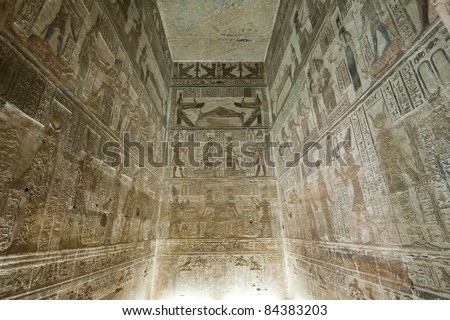Post an example of the inside wall(s) of an Ancient Egyptian temple.
What was discovered on the inside of the temples?
Carved and painted pictures on every wall
Scholars believe that Ancient Egyptians were inspired and influenced by which written language?
cuneiform
What is the difference between logographic and alphabetic elements?
Logographic was very general and stylized, and Alphabetic was more or documenting events
The term Hieroglyphic derived from what two Greek words?
Hiero meaning sacred and Glyphic meaning engraving or writing
What is a scribe?a person who writes books or documents by hand as a profession
Who else was trained to read and write? Why?
Students, military leaders. In order to communicate with one another in battle
Post an example of hieroglyphics on papyrus.
What is papyrus and how was it made?Substrate made from reeds native to Egypt
 | |
| Rosetta Stone |
What were the Books of the Dead?
The text consists of a number of magic spells intended to assist a dead person's journey through the afterlife.
How did Ancient Egyptian hieroglyphics become a forgotten language?
After non-christian temples and tombs were closed people who could read hieroglyphics disappeared until no one knew how to read it
Post an example of the Rosetta Stone.
What is the Rosetta Stone? Where was it discovered?Discovered in Egypt. A rock with writing used to decipher the Hieroglyphics.
what three languages are included on the stone?It was in Greek, eygptian hieroglyphics and demotic.
Why couldn't the text on the Stone be deciphered?
The stone was broken in places and none of the three texts were complete.
Who finally deciphered the text?
Jean Francois Champollion
What was his breakthrough?
when he matched the hieroglyphics with the Greek version of them
Why does the interpretation of the Rosetta Stone have such significance?Because now we know more about ancient Egypt and the Egyptian hieroglyphics


No comments:
Post a Comment